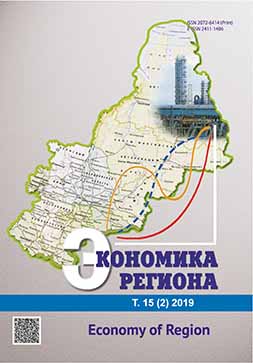МЕЖДУНАРОДНАЯ АКАДЕМИЧЕСКАЯ МОБИЛЬНОСТЬ В РОССИИ:
ТЕНДЕНЦИИ, ВИДЫ, ГОСУДАРСТВЕННОЕ СТИМУЛИРОВАНИЕ
International Academic Mobility in Russia: Trends, Types, State Stimulation
Author(s): Sergey Vasilyevich Ryazantsev, Tamara Kerimovna Rostovskaya, Vera Igorevna Skorobogatova, Vadim Aleksandrovich BezverbnySubject(s): Higher Education
Published by: Институт экономики Уральского отделения Российской академии наук
Keywords: academic mobility; types and forms of academic mobility; outgoing (exit) academic mobility; incoming (entry) academic mobility; international cooperation; potential of academic mobility;
Summary/Abstract: In the context of globalization, Russian systems of education and science have become more open to the contacts with foreign partners. After the period of USSR’s isolation, in 1990s, Russian scientists and teachers began actively develop international partnership with foreign universities and research centers, receive grants, participate in conferences abroad, and publish in international journals. Russian graduates and postgraduates became active participants of education migration. In several years, from an ‘iron-curtain’ country Russia turned into a country that offers various forms of academic mobility for scientists,teaching staff and students. The stimulating factor for the international relations’ development was Russia’s accession to the Bologna declaration. In this research, using statistical, analytical, comparative legal, and sociological methods we clarify the term “academic mobility” in its conceptual understanding and suggest a classification of academic mobility’s types. The article describes the trends of the main forms of Russian academic mobility. Moreover, we outline ways to improve Russian national legislation for stimulating academic mobility in the interests of developing the national science and education systems. The article proposes a broad interpretation of the academic mobility’s definition as a mindset and readiness for movement (potential), as well as the actual territorial movement (academic migration) in order to receive education, advanced training, and scientific and educational activities for both students and teaching staff. The academic mobility’s types and forms can be classified in accordance with its geographical (territorial) aspect, activity, duration. Based on the classification, the article summarizes information in the context of two types of international academic mobility: incoming (entry) foreign citizens in Russia and outgoing (exit) Russian citizens from Russia. We have revealed that to a greater extent, the Russian migration legislation covers the academic mobility’s issue more than the legislation on higher education and science. In addition, the migration legislation of international academic mobility is interested more in attracting foreign students and teachers to the country, than in regulating Russian students’ and academic staff’s mobility abroad. We have highlighted the factors impeding the realization of the Russian academic mobility’s potential and give recommendations for their elimination. The study’s results can be used in economic sociology, sociology of education, migration policy towards students.
Journal: Экономика региона
- Issue Year: 15/2019
- Issue No: 2
- Page Range: 420-435
- Page Count: 16
- Language: Russian

